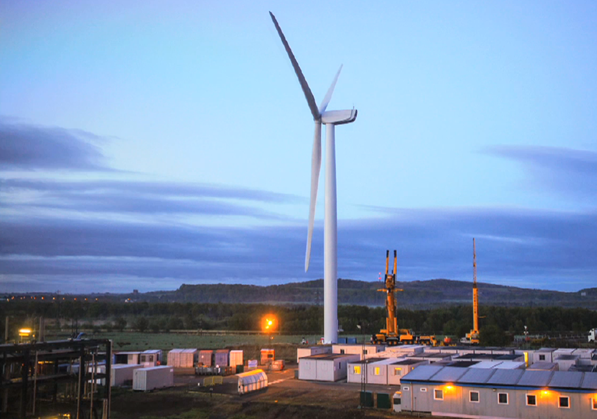
Project Investigations
Introduction to Compressed Air Energy Storage
In the pursuit of improvement of on-site autonomy through the integration different forms of renewable energy, energy storage is pivotal to achieving such aim. The analyses above showed the power generated through different case scenarios for combination of renewable energy sources to meet energy demand requirements for the site with the aim of identifying the most optimum mix. This analysis was carried out by modelling via Microsoft Excel. During the course of trying to identify the most optimum mix, it was discovered that there is a need for the incorporation of storage to improve on-site autonomy due to wastages from excess power generation and inadequacies in energy supply to meet site demand. This led to the process of selecting the most optimum energy storage option suitable for integration with the renewable energy sources.
Introduction to Liquid Air Energy Storage
In the current engineering climate, there is a serious need for new technology and development in large scale energy storage. Over the course of the group project, we understood that the large demand profile of the GSK site would have serious implications on the balance between importing and exporting power with the generated power on site from the renewable sources. Under the current modelling for this project and under the project objectives, we came to a conclusion that it would be necessary for the site to implement some sort of storage technology in order to improve match rate, reduce grid interaction and increase overall autonomy. The initial thought was to look at storage devices that could possibly be implemented on site and provide the site with a solution to the variable supply profile of the wind turbines. After much consultation and studying of energy storage, we came to realise that there was no single technology that would be suitable for the site, mainly due to the high demand and supply profile. Air compression is a serious possibility however, after some reading we came to a conclusion that the technology was not mature enough for the capacity needed on the site. It was therefore necessary to look at other emergent technologies that give more advantages with regards to large scale and efficient energy storage.
Introduction to Power Protection Systems
At the beginning of the project, in our initial information gathering and meetings with GSK, we discovered that the company have some serious issues with the power supply from Scottish Power from the grid network. Looking at the historical data, it presents a significant problem for the site, as they have been and still are susceptible to power quality problems such as voltage dips/spikes, harmonics and ongoing blackouts. In the case of some of the more minor issues, the site can look at its demand side management to mitigate some of the problems. However, in the case of the rolling blackouts, which can only be down to the grid cannot support the high energy consumption of the manufacturing site, some of these problems can be addressed through the integration of efficient and working renewable energy systems with suitable energy storage. In any case we think that the site will have sufficient power from storage in order to black start the processing. The power issues present serious economic downfalls for the company and for a workable and self-sufficient site, it must be addressed.
In this project, we modelled the site using a number of renewable energy supplies, in the hope that with sufficient energy storage the site could become self-sufficient and fully autonomous, reaching the stage of hopefully operating in off-grid mode e.g. using the site as an adaptable micro-grid system. In this modelling we have come to realise that the supply from the onsite renewable energy sources, do not provide enough power to meet the demand of the site. In this case, the site therefore has to import power from the grid at a given time in order to meet the demand. The modelling also includes the use of air compression as a suitable energy device, that can store excess energy for use onsite to meet demand at another time. We have concluded that in the case of using energy storage, the site still cannot provide enough power supply to meet the demand on site. So therefore in any case, GSK will have to import from the GRID with the current renewable systems on site. Furthermore, it is important then that GSK implements some new technology to deal with the ongoing power quality issues.